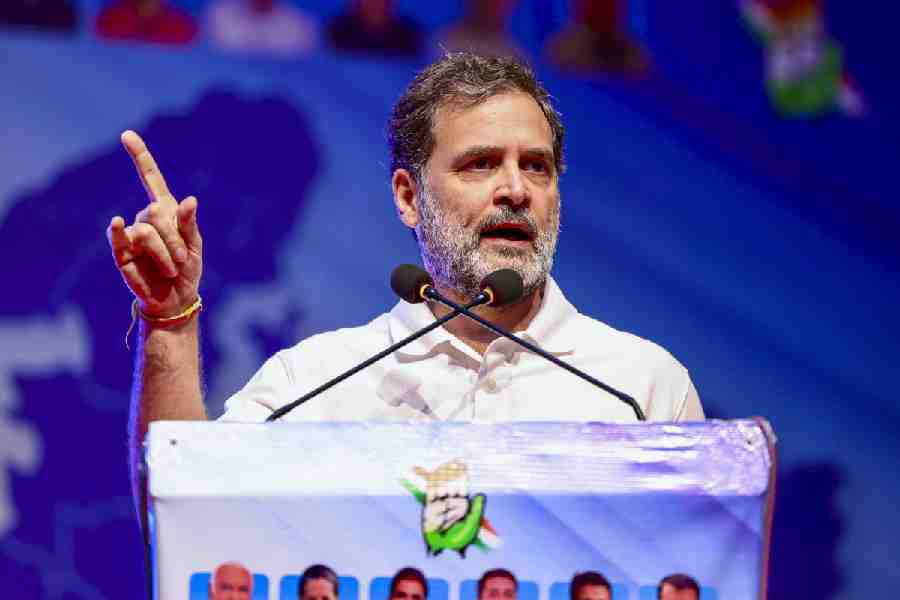 |
Hot seat - Sudarsan Panda,
Director of Nandankanan
Zoological Park
The number of tigers at Nandankanan has come down to 23 with two adults and five cubs dying in the past six months. Wildlife activists have alleged negligence and callousness on the part of the zoo authorities.
Ignorant people should not comment on this issue, thinking themselves experts. I have a PhD in this subject. Research has shown the survival chances of the first litter of tiger cubs are very low. This has happened 19 times earlier in the zoo. Human interference makes the mother reject the cubs. A litter size of five is also unusual, which reduces their chance of making it through. One adult tiger died in January of cancer and the other succumbed to injuries sustained in a fight while breeding.
How is the animal exchange programme coming about? Any new species coming to town?
It is a difficult programme. The import of exotic animals is even more difficult as it involves clearance at several levels and approval of various state and Union ministries. After a lull of nearly a decade, it has speeded up in the past three years.
Do you agree the zoo lacks adequate medical facilities for sick and injured animals?
All zoos in the country lack veterinarians trained in tackling wildlife diseases. Universities in India providing short courses in this subject do not give sufficient knowledge and experience to vets-to-be. Our zoo has about three senior doctors for treating wild animals and we take the help of expert professors as and when required.
From where do you procure the food for the animals and birds?
Around 83 types of feed items are procured for 120 species of animals, birds and reptiles. Most are supplied by Omfed, Opolfed and tribal development cooperative corporation.
The zoo has been earning lots of revenue, especially in the past three years. However, it is alleged that there are no proper facilities, such as toilets and drinking water, for visitors.
Our zoo is visitor friendly. When I joined in 2009, the condition of toilets was very bad. Now, with the help of Odisha Tourism Development Corporation, we have built four new toilets. We have four drinking water kiosks, well-maintained seats and shelters. We provide wheelchairs to the disabled and also have a cloakroom where visitors can keep their luggage and move around freely in the zoo.
What steps are you taking to generate more revenue?
We have outsourced services such as parking, aquarium visits, three safaris and ropeway. We introduced battery-operated vehicles for visitors. So, through outsourcing and open tendering process, we are able to earn more revenue. In three years, the number of visitors has gone up from 18 lakh to 24.6 lakh and revenue, from Rs 3.5 crore to Rs 5.5 crore.
Do you depend on the government for funds?
Earlier, we used to give 50 per cent of the revenue to the government and the rest used to remain with the Society for Nandankanan Management and Development. The government used to give us some funds under the state plan, but not anymore. It has decided that the entire money will remain with the society but we will continue to draw our salaries from the government. We have requested them to give us a token amount of Rs 1,000.
The ropeway service has been discontinued following a mishap in 2010. Will the service resume?
The Calcutta-based company that was operating the ropeway was unable to maintain it, causing difficulties for visitors. Now, three organisations have come forward and the matter is under the government’s consideration. A decision will be taken in a month or two.
A lioness had recently escaped from the zoo, causing panic. What steps have you taken to prevent such incidents?
It was an accident but we were able to track the animal down without injuring it, our people or others. Even if an animal escapes, visitors should not worry as there is a line of barrier to keep them safe. We have learnt a lesson and have fortified the exit routes.
Do you have sufficient manpower to handle emergency situations such as this?
Yes, we have 162 permanent staff members and 127 temporary ones. There are a few vacancies which will be filled up soon.
What is the response to the animal adoption programme launched by the zoo four years ago?
Not good. We had written to some corporate houses in this regard but the response has not been encouraging. I had even requested some actors to participate in our programme, but they too refused. It was very discouraging and I have stopped approaching people. I can’t beg people to be involved in our activities. The Nandankanan director is not a beggar.
Passion for wildlife
• Sudarsan Panda, a 1987 batch Indian Forest Service officer, is known for his rich experience in the field of wildlife management
• A brilliant student throughout his career, Panda did his matriculation from Bhadrak High School and obtained an MSc in zoology from Utkal University. He also did his MPhil and PhD (zoology) from Utkal University
• He worked as divisional forest officer in Nabarangpur, Jeypore, Boudh, Sambalpur and Bhubaneswar city forest divisions. He served as regional deputy director (wildlife preservation), western regional office of ministry of environment and forests, government of India, Mumbai, on central deputation from November 1995 to November 1999
• He was posted as chief executive, Chilika Development Authority from June 2006 to July 2009, during which he worked hard to bring the lake into international focus. Though he continues to be the director of the Nandankanan Zoological Park, he retains his interest in the academic field. Six PhD scholars are conducting research under the guidance of Panda at Utkal University and Berhampur University on various subjects on biodiversity conservation
• Panda has authored and co-authored a number of books relating to Chilika lake, such as The Atlas of Chilika, Bird Atlas of Chilika, Fish Atlas of Chlika and Biodiversity - Phytoplankton of Chilika Lagoon. He is also the author of The Butterflies of Nandankanan, Nandankanan - Faunal Diversity and Spiders of Nandankanan
What would you have been had you not been an IFS officer?
I would probably have been a teacher. My first priority was joining the Indian Administrative Service.
I tried for the civil services and then for the forest services. When I got selected for forest services and got state cadre, I jumped at the opportunity.
I entered this profession in 1987.
I grew up in a rural area. As a child, I was not too ambitious though I was a good student. I studied zoology and it was my teachers who inspired me to join the services. When I was doing my postgraduation, I became interested in wildlife activities.










